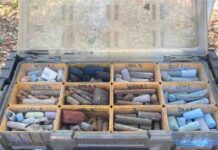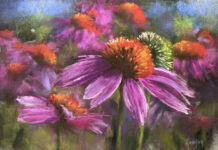As the world mourns the sad death of Her Majesty Queen Elizabeth II (1926-2022), I pondered a way to mark the loss in Pastel Today. At first, I looked for an official portrait of the monarch done in soft pastels. So far, I’ve found none. I then decided to check out the Royal Collection Trust and there I found a number of pastel paintings.
Inspired by the current exhibition of Eighteenth Century Pastels at the Getty Museum, I picked out these four personifications of the seasons by Rosalba Carriera (1673-1757). Rosalba Carriera was born (and died) in Venice. “She began her career as a painter of snuffboxes but rose quickly to fame for her pastel portraits, which became highly desired across Europe. She spent a brief period in Paris in 1720 where she was met with great acclaim, returning to Venice where Consul Joseph Smith acted as a friend and agent. He also had the finest collection of her pastels in the city, only five of which passed into the Royal Collection in 1762.”
First up is A Personification of Spring. A woman, right breast exposed, accepts garlands of flowers from a putto (you can barely see his wings). Her attention is on this cherub and seems unaware of us, the viewer.
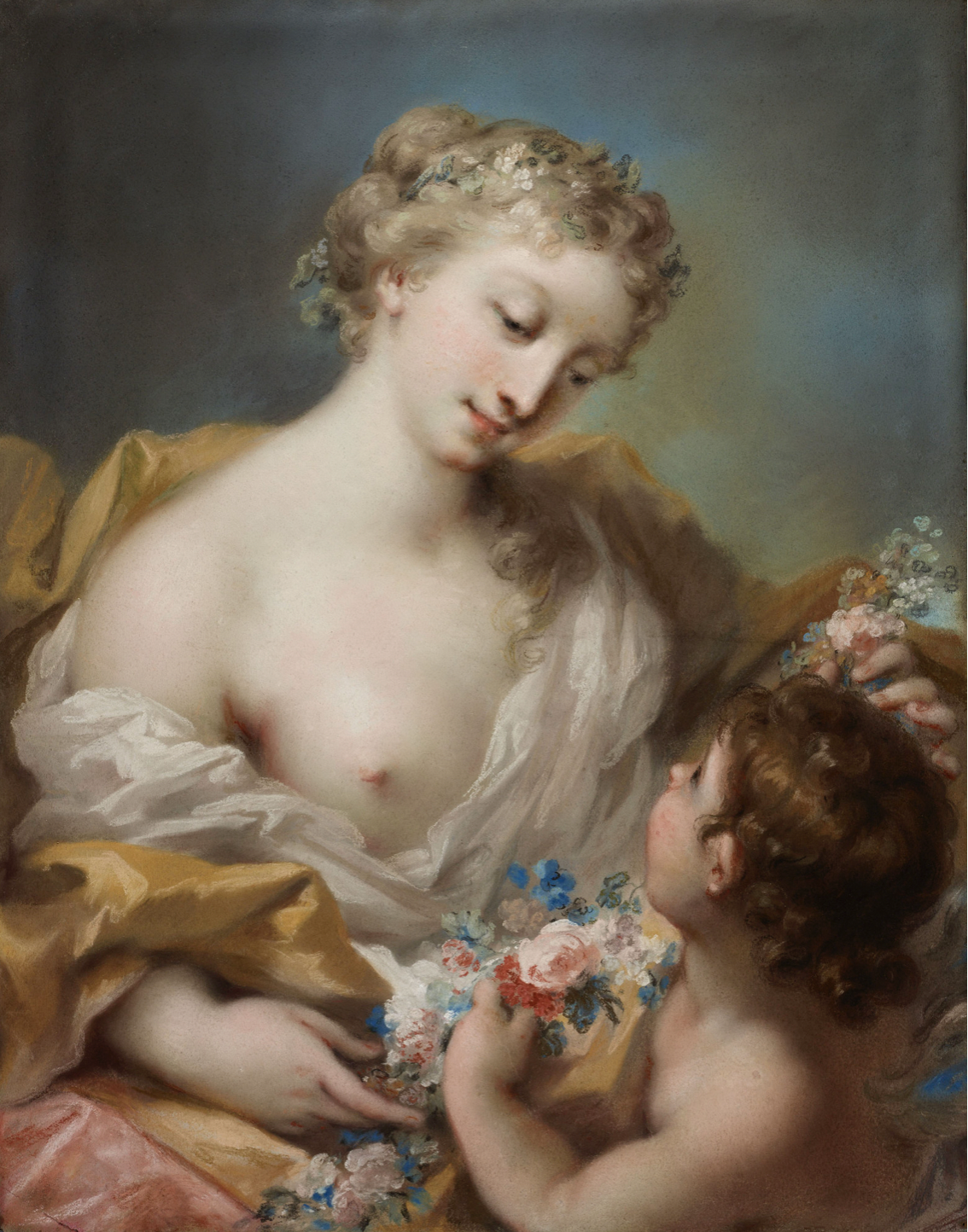
According to the Royal Collection Trust website, “Rosalba Carriera made several versions of female allegorical figures representing the Four Seasons. On 25 May 1726, her diaries recorded a set of the Four Seasons ‘to dispatch to London, to Sig. Smith.’ Another set (now in the Hermitage, St Petersburg) probably belonged to Carriera’s great friend Crozat in Paris. Smith, however, does not appear to have owned all four allegories: only the Winter and the Summer were part of his collection.”
Let’s have a look at Summer.
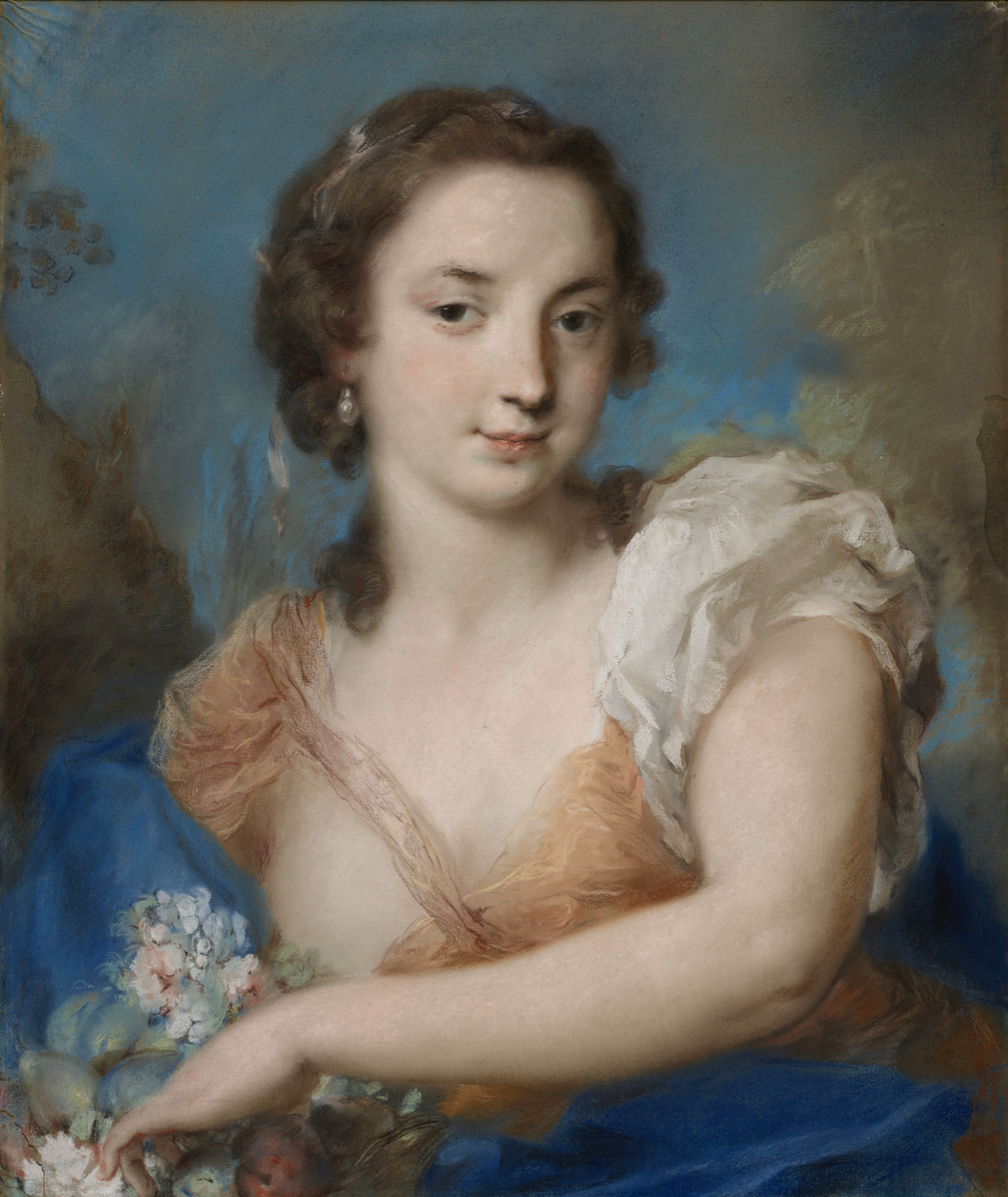
Unlike Spring, Summer, arm across her body as if to pick up a piece of fruit or posy from the basket in front of her, looks out at the viewer and seems about to offer the fruit or flowers to us. Outside, under the blue sky and framed by rocks and trees, she’s fully dressed in a loose and fairly transparent garment, wrapped in a bright blue fabric that echoes the colour of the sky. We are indeed in summer!
“This pastel was almost certainly part of Joseph Smith’s collection and came into the Royal Collection in 1762; in the 1770s it was hanging alongside Carriera’s pastel of Winter (RCIN 400647) in the King’s Bedchamber at Buckingham House.
On 26 May 1726 Carriera’s diaries record a set of allegories of the Four Seasons to be dispatched to London care of ‘Sig. Smith’, presumably Joseph Smith’s brother, John, who handled his shipments in England. Carriera made several sets of allegories of the Four Seasons, but a full set was not among the twenty or so pastels owned by Smith. The Summer and Winter were probably made almost twenty years apart. The present pastel has been dated about 1744 due to the similarity of the pose to an allegory of Earth accessioned into the Elector of Saxony’s collection at Dresden that year.”
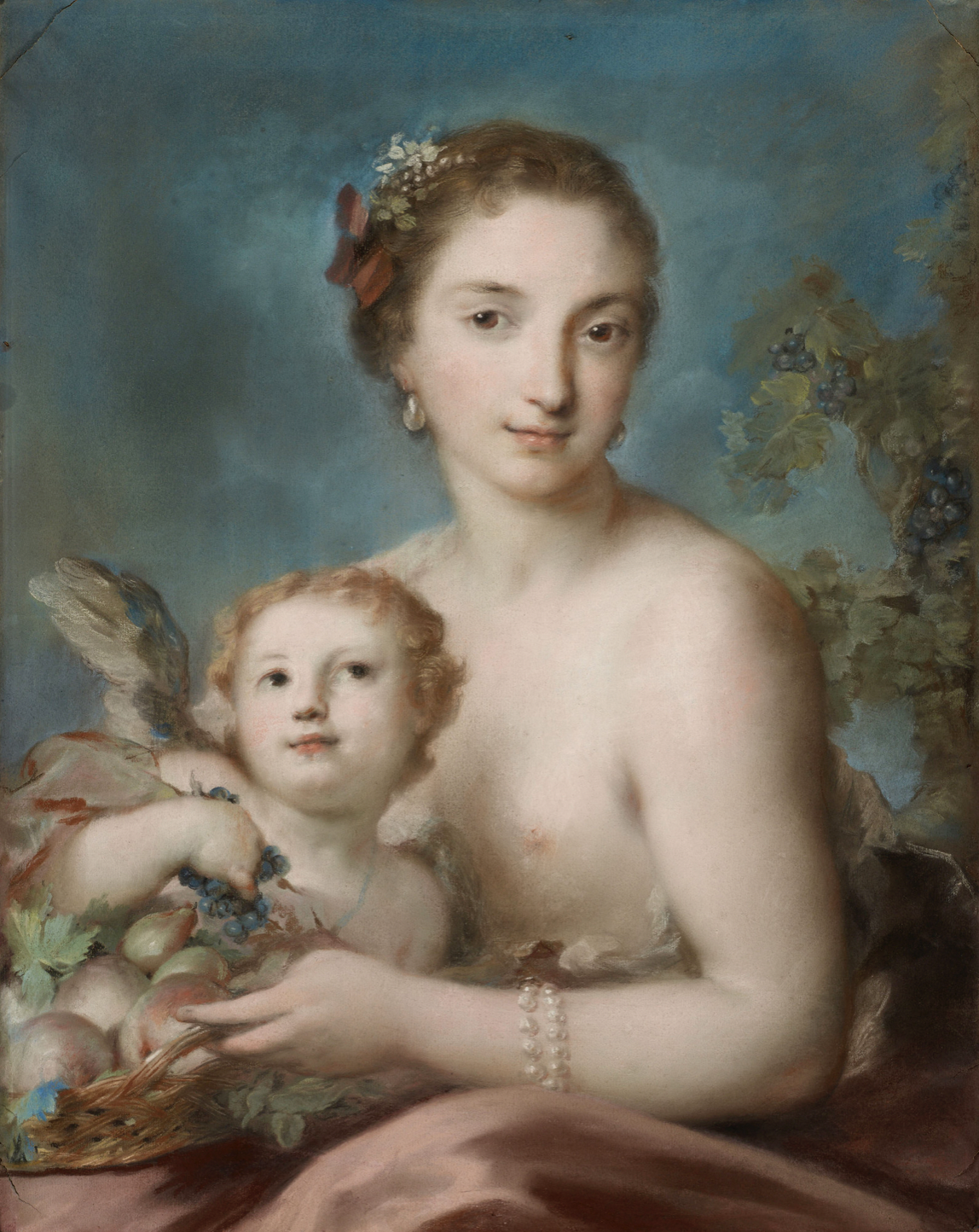
It’s now Autumn time.
Another young woman smiles at us as she holds a basket of fall fruit. A winged putto takes a bunch of grapes, the plant of which you can see in the background. Despite the cooler weather, Autumn’s upper body is hardly clothed, while her lower half is draped in a reddish brown fabric. The ribbon in her hair shares the same colour as the fabric, all of which speak to the warm tones of autumn. This piece is similar in size and composition (with putti and baskets of fruit) to A Personification of Spring.
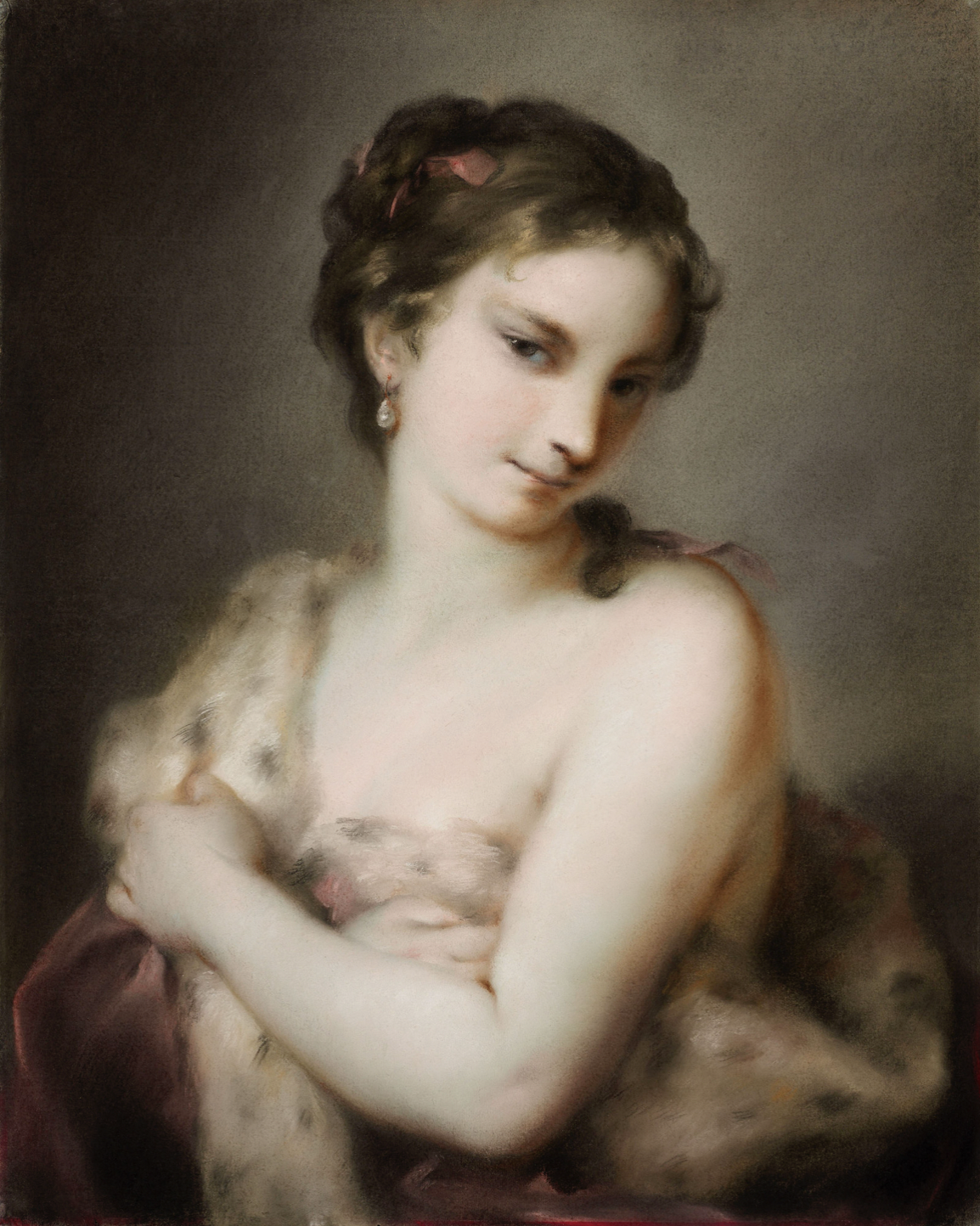
And finally, we come to Winter. A young woman clasps a fur-edged wrap around her body and looks coyly, almost slyly, out at us.
The fabric of the wrap and the ribbon in her hair are rusty red and similar to those found in the Autumn painting. According to the Royal Collection Trust website, however, “at the bottom edge, under the frame’s fillet, strips of bright fuchsia [show] the extent to which some of the pastel pigments have faded over time.” You can almost see a slash of red right at the bottom. What would the original have looked like?
“This pastel was one of the most admired works in Joseph Smith’s collection; it was described by him in the ‘Italian List’ of paintings that entered the Royal Collection in the sale of Smith’s collection to George III in 1762 as ‘a Beautiful Female covering herself with a Pelisse allowed to be the most excellent this Virtuosa ever painted’. Smith’s pastel of Winter was probably made around the same date as the diary entry mentioned above (26 May 1726); an undated letter from Smith to Carriera asks the artist to make two versions and to put the best one aside for him…Smith evidently guarded the pastel jealously, as in 1735 Robert Dingley wrote to Carriera directly requesting a pastel of ‘a pretty young country girl…in the style of Winter in Mr. Smith’s collection…there is no need to say anything to Smith about this’ (F. Haskell, Patrons and Painters, New Haven and London 1980, p. 303).
In traditional allegories, Winter was typically shown as an old man, but Carriera transformed the subject into a beautiful young woman. After the sale of 1762, the pastel was put on display in George III’s bedroom at Buckingham House alongside the pastel of Summer.”
_______________________________________________________________________
And then there’s also this in the Royal Collection Trust!
A pastel painting from 2012, this is the antithesis in style and colour of the eighteenth-century figures above. But this too is in the Royal Collection Trust! I loved seeing that there are pastels in the Collection that range over many time periods.
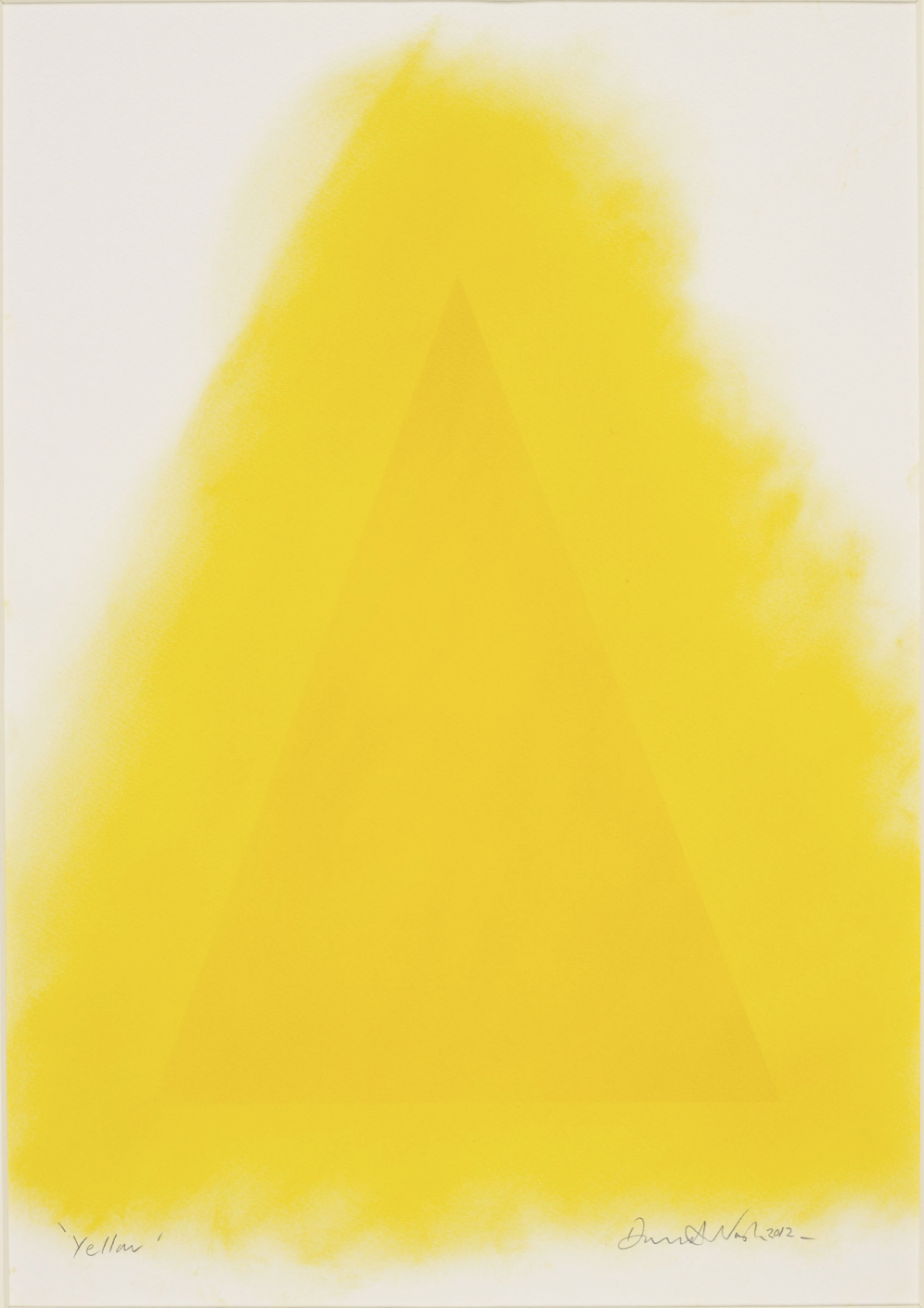
According to the website, “The drawing was made by rubbing yellow pigment into the paper with diagonal movements using a fleece cloth. The triangle was applied in the same manner, using a stencil. Nash remembered seeing Her Majesty The Queen in a yellow coat and the liveliness it brought to the occasion.”
I find that inspiring – that a vivid memory is brought to life in a completely unexpected and vibrant way!
And that’s it for this time,
Gail

